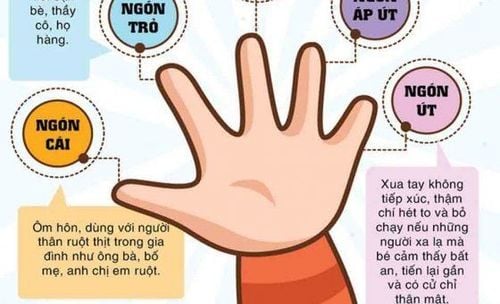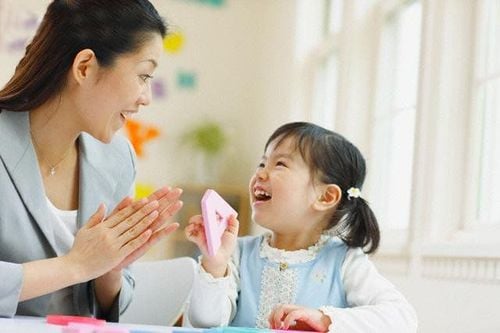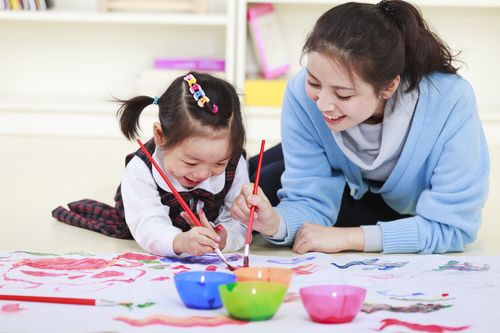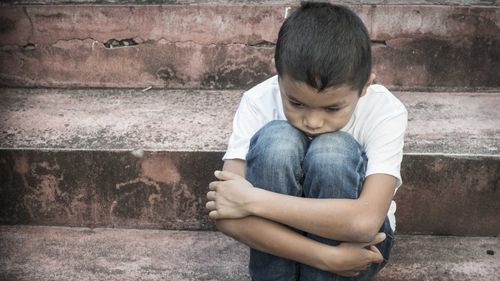This is an automatically translated article.
The article was written by Special Education Teacher Phan Thi Phuong - Unit of Regenerative Medicine Clinic and Educational PsychologyChildren are a sensitive and vulnerable entity due to their immaturity and lack of knowledge and social skills. In today's society, children are also victims of many cases of physical abuse and sexual abuse, causing them to fall into a deadlock with lifelong psychological trauma. So how can we teach children the necessary skills to protect themselves from sexual abuse? One of the lessons that parents can guide their children to protect themselves and avoid abuse is the "Rule of the Fingers".
1. Why is it called the “Rule of the Fingers”?
Firstly, hands are very close to children, especially children with disabilities. Babies use their fingers from birth. Use your hands to explore the world around you through touching, touching, holding, and grasping. Hands are also tools for children to learn and interact with those around them.Second, five fingers correspond to the child's five communication circles.

Quy tắc ngón tay giúp nâng cao kỹ năng tự bảo vệ của trẻ
2. What are the five communication circles?
In the life of each person will go through different stages, with different relationships. When he was a child, he only knew his father, mother, grandfather, grandmother, brothers and sisters. Even older, exposed to neighbors and family friends. At school age to meet friends and teachers. When growing up, will meet colleagues, customers...
Five communication circles of children are shown through hand movements when interacting with others:
Center circle : for relatives In the family (father, mother, siblings) children are allowed or allowed behaviors such as hugging, holding, holding, carrying, bathing when they can't do it themselves, sitting on their laps, sleeping together... The second round is for close people such as relatives, teachers, and friends. Children are allowed to hold hands, pat their shoulders, and pat their heads. The third circle is for acquaintances (trusted neighbours, parents' colleagues...) children are allowed to shake hands, greet, chat. The fourth circle is for strangers: the child just waves hello and goodbye. In addition to all these circles, with "Obvious People", children need to limit contact. Parents need to talk to their children about the concept of "Obvious People". These are not people who are ugly or sick, but people who make children feel insecure and uncomfortable. Those who intentionally touch sensitive parts of children such as underwear, genitals. For these people the young need to have a firm attitude that asks them to stop. If they don't stop the child needs to tell their parents or other trusted relatives. Parents also need to respect the feelings of young children. Do not try to force children to interact with young people who feel unsafe or anxious. These are feelings that need attention and close observation.
>>> Teach children to interact with strangers

Năm vòng tròn giao tiếp gồm những gì?
3. How do children memorize the “Rule of the Hand”?
Right from the moment children begin to have awareness of the relationships around them, parents can completely introduce children to the rule of thumb along with the communication circle. Parents can play games such as: let children paste pictures of the people around them corresponding to the circles; play a Q&A game while chatting about the communication circle; role play; solve problems in specific situations...
Parents need to clearly explain to their children the rules of behavior with each group of people in different circles. In addition, children should be warned about special cases in which children can "temporarily put aside" the above rules such as: when saving people, when in a situation of having to crowded together in public places, when performing cultural activities. technology in a collective environment...
This is a rule that is suitable for both children and adolescents, so parents can often talk with their children.
Please dial HOTLINE for more information or register for an appointment HERE. Download MyVinmec app to make appointments faster and to manage your bookings easily.
Reference source: "Sex Education Handbook" Dr. Nguyen Lan Hai












